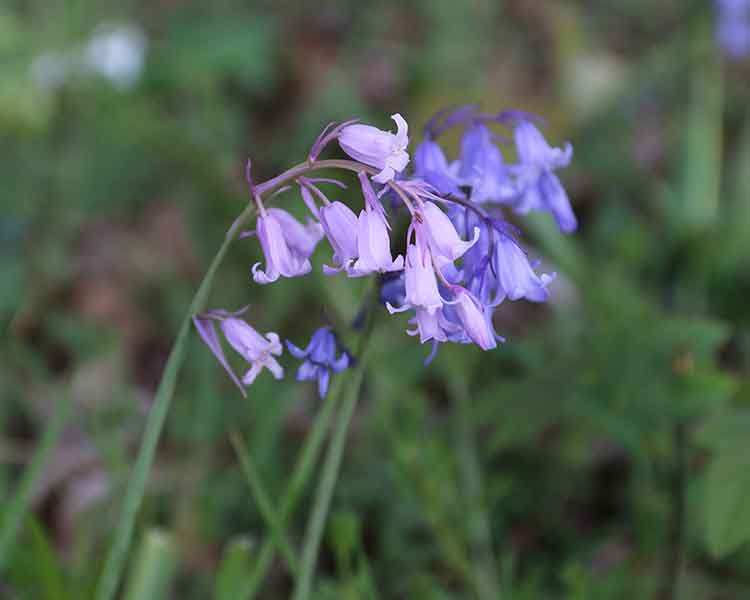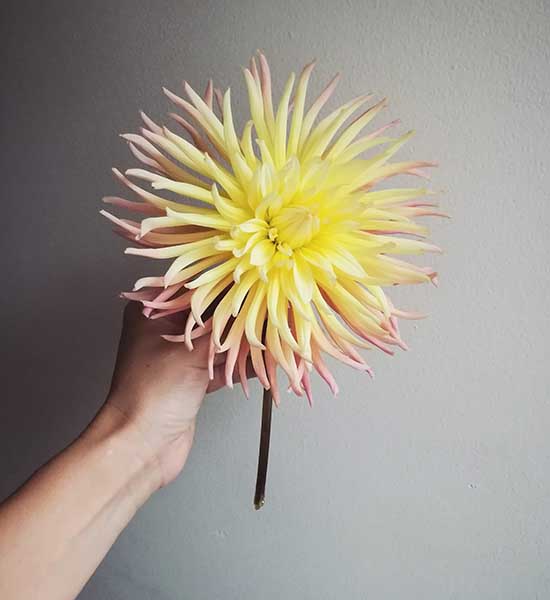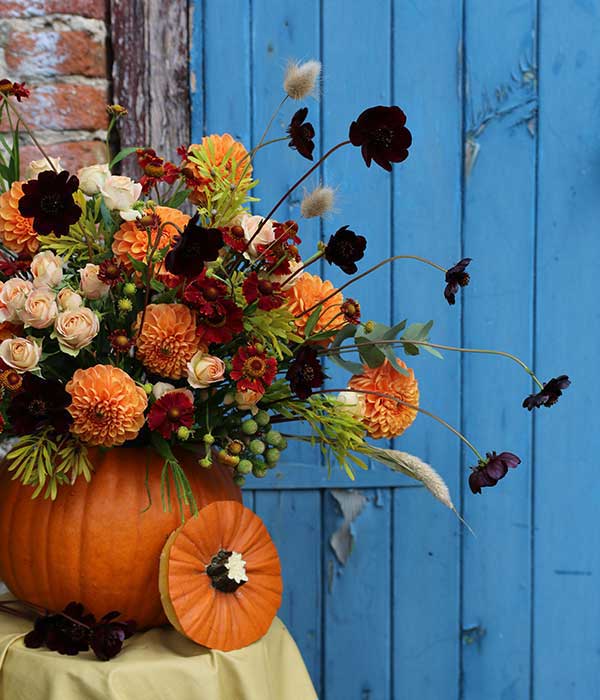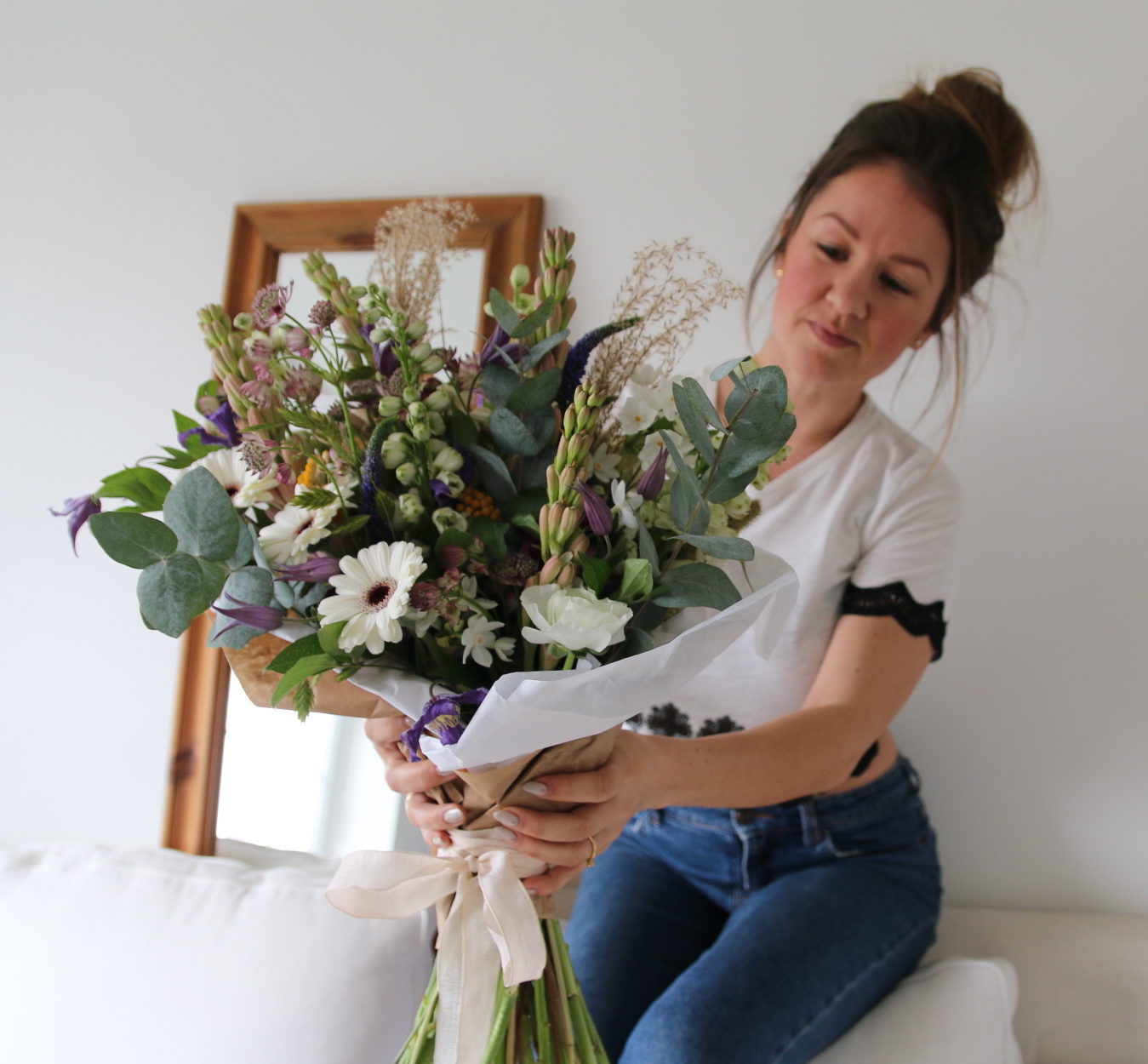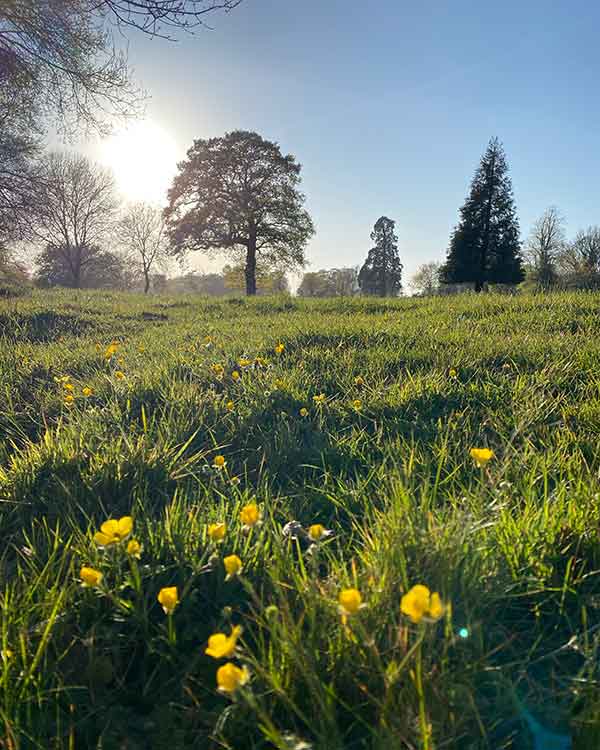
APRIL: TAKE A WILD FLOWER WALK WITH ME
If taking a walk through the good ol’ British countryside is your kinda thing, why not combine it with spotting some of the prettiest wild flower species that can be found during April? This is the month where spring really takes hold and everything is simply bursting with life. The trees are laden with blossom, the hint of summer can be smelt on the wind and birds sing from sunrise to sunset.
Here are 20 wild flowers that can be spotted during a stroll throughout the UK…
Living in Norfolk I’m close to plenty of wonderful walks, footpaths and open spaces. However, don’t be put off searching for these blooms if you live in a city or town, many of these wild flowers can be spotted along road sides, in hedgerows and inner-city parks or woodland. You don’t need any specialist equipment to find these beauties – but a magnifying glass may be useful to study their pretty details close up (just don’t trample on any of the poor little guys).
1. Primrose (Primula Vulgaris)
A absolute classic bloom that is a sure sign of spring. Primroses’s are said to represent eternal love – personally I just think they’re cute. The pale yellow petals and central sunshine yellow pop make the primrose one of the happiest looking wild flowers and provide vital nectar to springtime butterflies. They can appear as early as December all the way through until May, so April is the peak time to see them looking their flashy best.

Primrose, also known as the English Primrose.
2. Sweet Violet (Viola Odorata)
A culinary fave due to its sweet taste, this small edible purple flower is often used as decoration on cakes or in salads. Sadly, it’s wonderful taste (along with GBBO throwing edible blooms on basically every creation) have caused it’s decline in the UK due to being over-picked by foragers. In addition, this wild flower’s delicate scent has led it to being a common ingredient of perfumes, dating back to the Greek and Roman times. Nowadays they are most often found on banks or in meadows, but a keen eye is needed as they grow very low to the ground.

Sweet Violet, increasingly hard to find in the UK
3. Cow Parsley (Anthriscus Sylvestris)
I’d be surprised if you have to walk more than a few metres in an urban or countryside setting to spot one of these tall, exuberant wild flowers. The wide brimmed white clusters of blooms sit atop a long vibrant green stem and are super common at roadsides or garden edges. A distant relative of the carrot, this plant provides food for all kinds of British wildlife. Note: they taste nothing like carrots.

Cow Parsley along the roadside.
4. Bluebells (Hyacinthoids Non-Scripta)
If you haven’t ever seen a bluebell wood in all it’s glory, now is the time to get out there and discover one. With around 50% of the worlds bluebells being found in the UK, we Brits are privileged to be able to see this natural spectacle every year between mid-April and the end of May. The sweet smelling bell-shaped blooms carpet the ground of ancient woodland, making it easy to see why there are so many folklore tales surrounding these wild flowers. Easy to spot due to the bright blue colour, bluebells are often inundated with hungry bees, hoverflies and butterflies which enjoy feasting on the nectar.
Find a bluebell wood near you by using this fab guide by the Woodland Trust; https://www.woodlandtrust.org.uk/visiting-woods/things-to-do/woods-through-the-seasons/spring/best-bluebell-woods/
- Bluebell carpet, Norfolk
- Bluebell, also known as cuckoo’s boots
5. Greater Stitchwort (Stellaria Hollostea)
A delicate and easily overlooked wild flower, this small white bloom provides nectar for not only bees and butterflies, but also moths which rely on this essential food source. They open in April and the flowers turn to seed pods by June, which pop loudly and are a signal of summer – earning it the nickname ‘poppers’. Most commonly found in woodlands and although widespread, this small flower will require a little hunting down.

Greater Stitchwort – also known as the ‘Star-of-Bethlehem’
6. Ramsons (Allium Ursinum)
Wild ramsons produce a tall, straight stalk with a cluster of fluffy white flowers on the top. An almost exotic looking plant with wide green leaves, it is more well known as ‘wild garlic’ and is one of the most popular foods for foragers to pick. It’s absolutely DELISH! The whole plant from flower to root can be eaten, but if you are simply looking to observe this plant, chances are you’ll smell the romance-repelling garlic pong wafting through the woods before you see it. Much like bluebells, ramsons can overtake an entire woodland floor.

Wild Garlic, also known as Bear Leek
7. Ground Ivy (Glechoma Hederacea)
If you thought the flowers of forget-me-not and greater stitchwort were hard to spot, the ground ivy is near impossible. Growing barely a few centimetres above the ground, and producing only a few tiny lilac blooms that somehow blend into the green of grass, it’s a tough wild flower to find. It’s actually a part of the dead nettle family (more on those shortly) but it’s habit of spreading widely has led it to being called ‘ivy’. Interestingly, despite its small stature, this plant kicks out a strong scent, and before hops were discovered it was frequently used in the beer brewing process. I think it’s REAL pretty.

8. Summer Snowflake (Leucojum Aestivum)
Not be confused with the snowdrops which bloom between January and March, these slightly larger, taller white wild flowers have very rounded bell-shaped blooms with small green dots on the tip of each petal. Does it compare in beauty to the more well know snowdrop? Well, that’s personal opinion.. Spot them on banks and in woodlands, often close to water sources.

9. Forget-me-not (Myosotis)
The tiny bright blue flowers of forget-me-not have to be one of the most loved blooms of all. Although they were originally a wild flower, these minuscule blue beauties are now more commonly found sprawling in gardens, giving rise to arguments as to whether they are indeed still a wild flower or not. However, they are frequently found in woodlands and other countryside spots, making them a firm favourite for spotting whilst out and about. My mum adores these little guys!

10. Common Chickweed (Stellaria Media)
Another minuscule flower that will require a little patience to find, but is nonetheless fairly widespread throughout the UK. Some consider it to be a weed, but can actually be eaten in salads and is a valuable source of nectar for tiny insect species.

Common Chickweed – does actually get fed to chickens.
11. Garlic Mustard (Alliaria Petiolata)
Occasionally mistaken for a stinging nettle to the untrained eye, this tall and impressive plant is crowned with white cross shaped flowers and gives off a faint whiff of garlic. As with many wild flowers we have already discussed, it is popular for use in cooking, particularly salads. It often grows in hedgerows and along roadsides, making it easy to discover. Just be aware if picking – dogs love to pee on them so choose wisely…

Garlic Mustard – not a stinging nettle!
12. Common Comfrey (Symphytum Officinale)
This is another flower which is often considered to be a weed, yet has some incredible properties and is one of the best early food sources for bees particularly. The droopy bell shaped flower heads range in colour from white and cream to pinks and purples, looking strangely almost wilted. It naturally repels slugs, so think carefully before you dig any up from your garden!
- Comfrey in pink
- Comfrey in white
13. Bulbous Buttercup (Ranunculus Bulbosus)
Do you like butter? The only logical way to find this out is to hold one of these flowers under your chin (or chins in my case after a long winter). If the golden yellow shines off your skin, then you do (NB: not scientifically proven). It’s found in most gardens, on road sides and along almost all footpaths.

Buttercups – do you like butter??
14. White or Purple Dead Nettle (Lamium Album?)
A big shout out for these guys; THEY DO NOT STING! In fact, the dead nettle can make a tasty addition to salads. It’s super common and easy to find – often found close to real stinging nettles so take care if you are foraging. It’s easy to overlook these blooms as being ‘boring’ as they are everywhere, but close up the petals are almost orchid-like.
- White Dead Nettle
- Purple Dead Nettle
15. Cowslip (Primula Veris)
A fabulous little wild flower which has many uses, from helping cure coughs, to providing citrus flavour in food and flavouring wine. Tall and bright yellow, favouring meadows and open woodland, it’s not hard to spot. It’s believed the name comes from it’s rather unique habit of growing close to cow dung – ugh! So be careful when searching for this poo-loving bloom…

Cowslip, also known as Fairy Cups.
16. Lesser Celandine (Ficaria Verna)
This bright yellow member of the buttercup family starts blooming as early as December, and finishes in April, so be sure to try and catch sight of this before it fades away. It’s a cheerful flower, found in damp woodlands or sprawling on shady bank sides. With a high vitamin C content, this plant has been used for medicinal purposes in the past, and for insects it is a precious food source.

Lesser Celandine – also known as Pilewort (note in the picture a bulbous buttercup on the bottom left showing the difference in petal shape)
17. Dandelion (Taraxacum Officinale)
Although prized for its flavour and long list of health benefits, I personally think they taste rank. Despite my thoughts on this edible wild flower, it is regularly used in making salads, tea and even wine. It’s classed as a weed, and gardeners countrywide hate them with a passion. However, for the pollinators of springtime, they are essential food banks and of course children love blowing the fluffy seed heads known as ‘clocks’ to tell the time.

Dandelion – has hundreds of uses
18. Common Daisy (Bellis Perennis)
Unmistakable and a children’s favourite – who hasn’t made a daisy chain?! Although this tiny, hardy flower is seen throughout the year – I couldn’t have left it off this list as it’s just so easy to find.

The Common Daisy – a childhood fave
19. Wood Anemone (Anemone Nemorosa)
A sure sign that the woodland you are walking through is ancient, this flower has signalled the arrival of spring for centuries. This delicate bloom is names after Anemos, the Greek god of wind, hence their other name; Wind Flowers. The leaves smell slightly musky – nice.
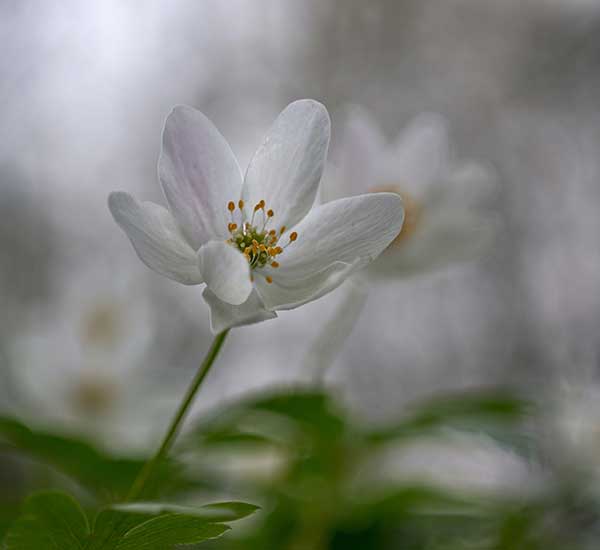
Wood Anemone – also known as ‘Wind Flowers’
20. Snake’s Head Fritillary (Fritillaria Meleagris)
Immediately identifiable and one of the most unusual wild flower species in this list, this beautiful bloom is now classed as vulnerable in the UK. So called because of the snake-like pattern on it’s petals, it has been the subject of a huge conservation effort across the country. I wish you luck in finding this rare gem!
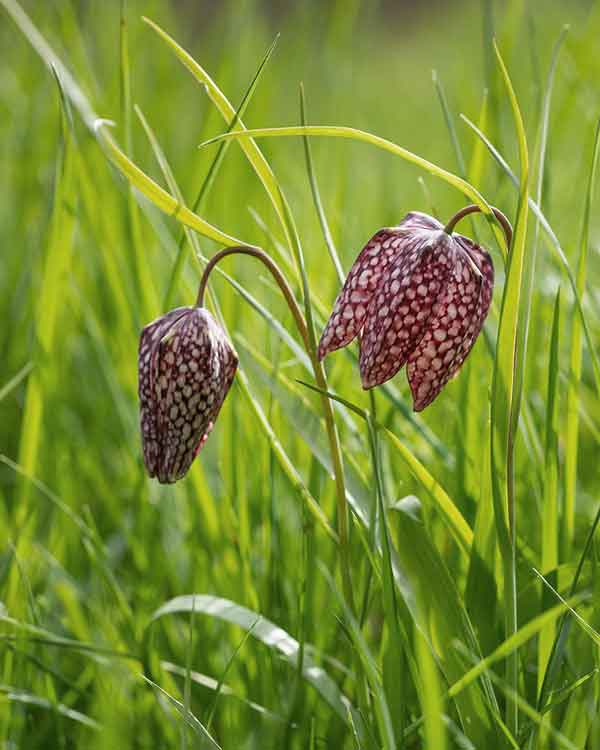
Snake’s Head Fritillary – now classed as a vulnerable species in the UK
As always with any activity in the great outdoors, please take care when foraging, photographing or just observing not to trample or upset the species growing nearby. Wild flowers are particularly delicate.
Thank you for reading!
K//


